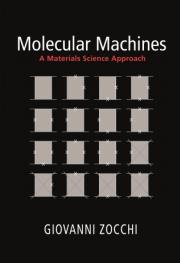Molecular Machines: A Materials Science Approach
 Giovanni Zocchi
Giovanni Zocchi
Princeton University Press, £50
Giovanni Zocchi introduces his subject by examining conformational transitions that occur in DNA deformation and continues with the mechanisms of enzyme action.
Interestingly for the biologist, the underpinning of the theoretical material depends on an understanding of the principles of Brownian motion, a phenomenon that most students
still observe as the random agitation of pollen grains viewed under the microscope. This principle of ‘random walk’ is then applied to the deformation of 30 base-pair DNA nanorods.
In the section on enzyme dynamics, Zocchi shows how such short DNA molecules can be used as a leaf spring to exert mechanical stresses at the molecular level, turned on and off by a chemical signal and linked to the viscoelasticity of an enzyme cycle in a similar way to real engines. He then applies these principles to random changes that produce point mutations, and the various states of binding of oxygen and carbon monoxide to myoglobin.
The author states that his book is aimed at physics and engineering graduate students who are attracted to applying equilibrium statistical physics and mechanics to cellular processes, but advises that clarification of the actual structure of enzymes, DNA and other biochemical compounds and biological terms with which they are unfamiliar may be obtained through Wikipedia searches! This, of course, highlights the challenges associated with crossing academic boundaries, but there is no doubt that such interdisciplinary work can result in significant advances, as exemplified by the manufacture of stable dyes, medical imaging, and the use of nanoparticles for drug delivery in cancer, tissue regeneration, and other cell and tissue-focused treatments. However, this is a new science, expanding into many diverse fields. The concepts introduced here may attract more interested physical scientists into the fold.
Dr Graham Godfrey CBiol FRSB


